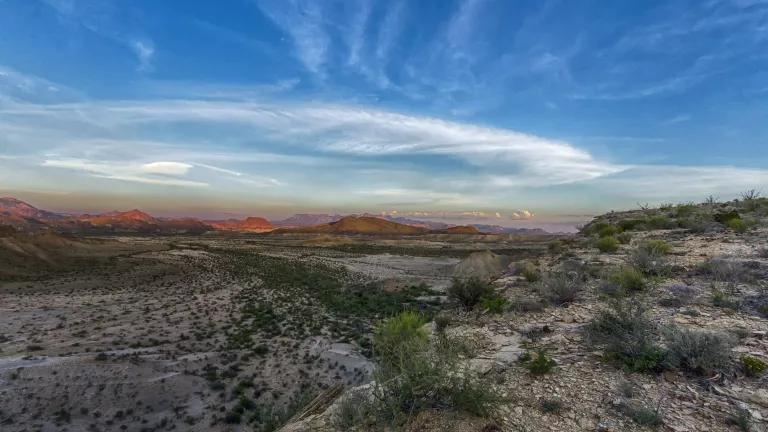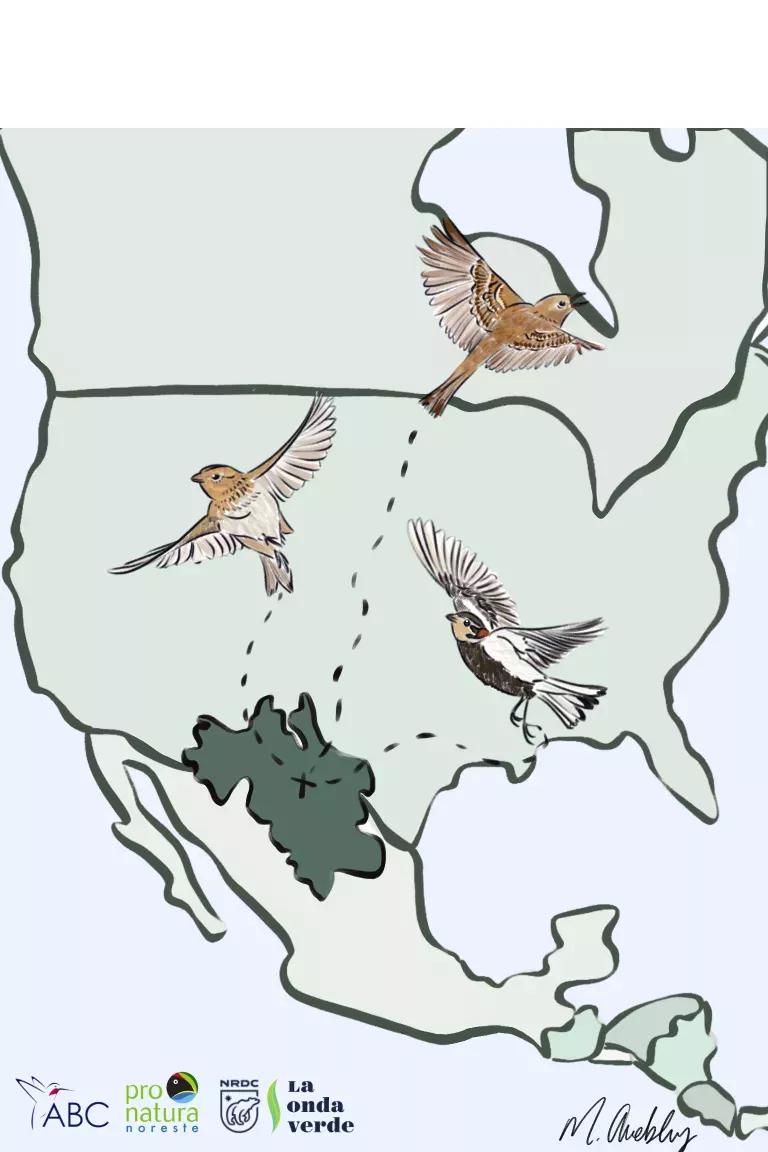Protecting the Wintering Home of Migratory Birds
The Chihuahuan Desert is the largest desert in North America and home to the most biodiverse grasslands in the world, including 500 species of birds.

Chihuahuan Desert in Brewster County, Texas
This blog was written with Andrea Becerra (NRDC) and Andrés Anchondo (American Bird Conservancy).
The Chihuahuan Desert is the largest desert in North America and home to the most biodiverse grasslands in the world, including 500 species of birds. Ninety percent of the grassland bird species that breed on the Great Plains in the United States and Canada winter in the grasslands of the Chihuahuan Desert, which encompasses the northwestern region of Mexico, reaching as far as Arizona, New Mexico, and Texas.
These grasslands are home to species that are both beautiful and important to their surrounding ecosystem. For example, take the chestnut-collared longspur—a bird that lives up to its name. This sprightly little bird has an adorable dark brown collar that complements its yellow cheeks and black markings. The longspur’s colleague, the Sprague’s pipit can be heard singing high in the sky during their migratory routes throughout North America. Both of these birds travel 1,500 miles every year, leaving behind their summer breeding ranges in the northern Great Plains to winter in the Chihuahuan Desert grasslands. Grassland birds demonstrate an impressive variety of species beyond just these two crowd favorites. During the months of April and May, migratory grassland birds from North America, such as the Baird's Sparrow and the Lark Bunting, return from their winter habitat in the Chihuahuan Desert to their breeding areas in the Great Plains.

The Chihuahuan Desert Grasslands are home to migratory birds like this Chestnut-collared Longspur.
Rick Bohn/USFWS
These birds’ populations have drastically declined, by half since the 1970s, as their breeding and migratory habitats have come under threat. While the exact cause of this massive decline is under debate, most experts attribute it to shrinking grasslands across their migratory range. Worldwide, grasslands are in peril. In fact, these arid ecosystems that account for around 30 percent of the world’s land area are increasingly being converted to cropland and are subject to desertification and shrub encroachment. The Chihuahuan Desert grasslands is where 90 percent of North American migratory birds winter, making conservation and restoration of this landscape imperative.
Increased drought due to climate change, as well as little enforcement around regulations on land use change and well drilling has had a severe effect on the native Aplomado Falcons and Mexican Pronghorn, as well as other grassland species. In Mexico, there has been an expansion and acceleration of center-pivot irrigated agriculture, a method of crop irrigation where equipment rotates around a pivot and crops are regularly watered with sprinklers. This method has allowed the conversion of more than 100,000 acres in the state of Chihuahua alone since 2005. Farmers near where Aplomado falcons breed often use this type of sprinkler system, as demand for cotton and other commodities pushes up their production.

Aplomado Falcon
Chris Hill/iStock
The Aplomado falcon, called such for its blue-grey or lead colored plumage, is around the size of a peregrine falcon and is an expert bird of prey. The Aplomado falcon is known for stalking its prey and taking home smaller birds or even squirrels and rabbits. Sadly, pesticides used in farming can affect the falcon. This falcon once roamed throughout the entire continent but now its territory has been greatly diminished and, in North America, it can only be found in one small area of the state of Chihuahua in Mexico.
Projected growth in oil and gas could further degrade vital environmental services provided by this region, particularly as a nature-based solution to soil carbon storage. Grasslands store 10 to 30 percent of the world's soil carbon. Meanwhile, grasslands converted to intensive agriculture release this greenhouse gas from the soil and increase air pollution. Despite its scarcity, water is increasingly being overexploited from aquifers as grasslands are converted into intensive croplands.
The protection of the Chihuahuan Desert grasslands is critical for the conservation of the complete life cycle of these birds that know no borders. Climate change, unsustainable water use, and poor grazing practices have contributed to the degradation of these grasslands. Despite being one of the most important ecosystems in North America, the territory for these birds continues to shrink.

Madeleine Audsley
Towards Solutions
To prevent and stop the threats that endanger the species and grasslands of the Chihuahuan Desert, various cross-cutting solutions need to be implemented. Among the solutions are:
- restoring degraded areas,
- implementing sustainable water management strategies,
- enforcing land use change regulations,
- and promoting soil-friendly livestock practices.
American Bird Conservancy, Pronatura Noreste and NRDC are working together to promote solutions that conserve grasslands and all that leads to a healthy territory: its biodiversity, cultural value and the economic livelihood of the area.
To learn more about the Chihuahuan grasslands, take a look at our story map and follow #EnArmoníaConLosPastizales on Twitter, Facebook, and Instagram. Also be sure to check out our partners’ work, including this video on the importance of grassland species preservation from Pronatura Noreste and a blog from ABC.



